NatureZen: The Fluffy Stuff
words and photos by Melissa McMasters
Even before this week’s snowfall, I’d been thinking about how despite not being a big fan of the cold or the gray skies, winter is my second-favorite season to go birding. While the near-daily arrivals of new species and the thrill of chasing unexpected migrants make me love spring the most, it can also be challenging and frustrating. “Why won’t that wren hush for five seconds so I can hear these other birds?” “Why don’t the orioles ever come out of the canopy?” “Which warbler says ‘teacher-teacher-teacher‘ and which one says ‘cheery, cheery Cheet-o?'” (Ovenbird and hooded warbler, respectively. I THINK. Ask me in May.)
By contrast, winter birding is slow and easy. The birds themselves aren’t in a hurry to get anywhere or to attract a new mate. The available food sources are closer to our eye level than they are in spring, when the treetops are full of delicious insects. Bare branches make it easier to spot birds that are masked by leaves for the rest of the year. Plus, mixed flocks of songbirds mean that if you find the spot in the Old Forest where the group is hanging out, you’ll spot several species at once. And that’s not even getting into winter’s vaunted status as Weird Duck Time.
So it’s been a pleasure–albeit physically painful after a while in those single-digit wind chills–to spend the past couple of days watching birds go about their business in the snow. Let’s take a walk, shall we?
On Monday, after watching families sledding at the Shell for a while, I started walking toward the Old Forest. But I didn’t get far, because there was a holly tree that seemed to contain every American robin in the neighborhood. As they plucked berries, they’d shake the limbs, creating a new little snowfall every few seconds.

There were just as many hunkered down as there were actively feeding. In the winter, birds contour their feathers to fluff them up, trapping air that acts as insulation. They also try to decrease the surface area of all their non-floofy bits; this one has its head tucked close to its body and its feet out of the wind.
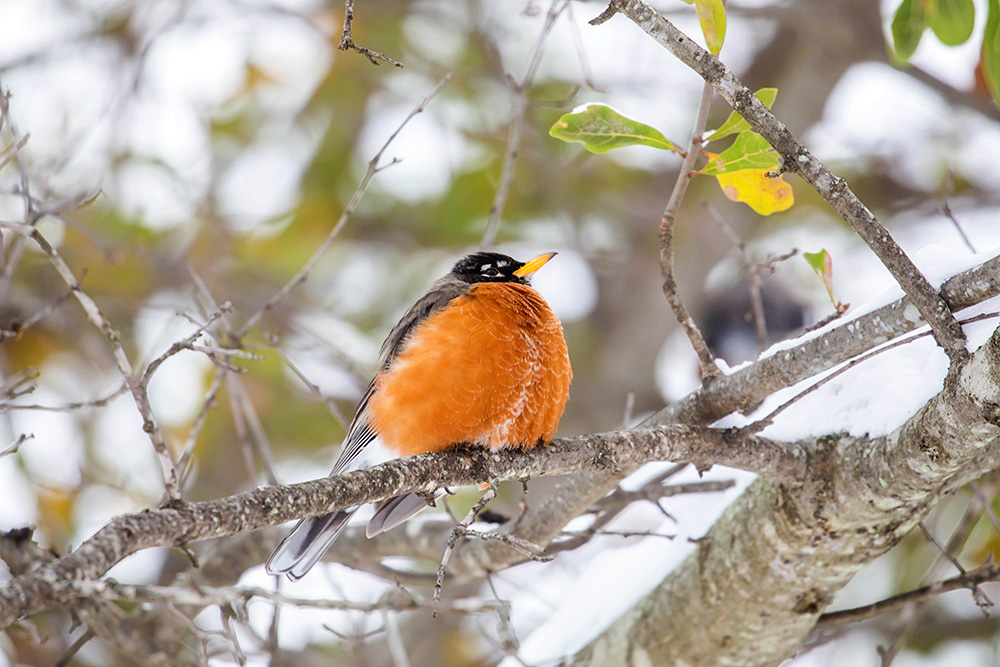
Nearby, a few dark-eyed juncos were looking for seeds under a different tree. Perhaps they look less cold to me than the robins do because their bellies match the snow?
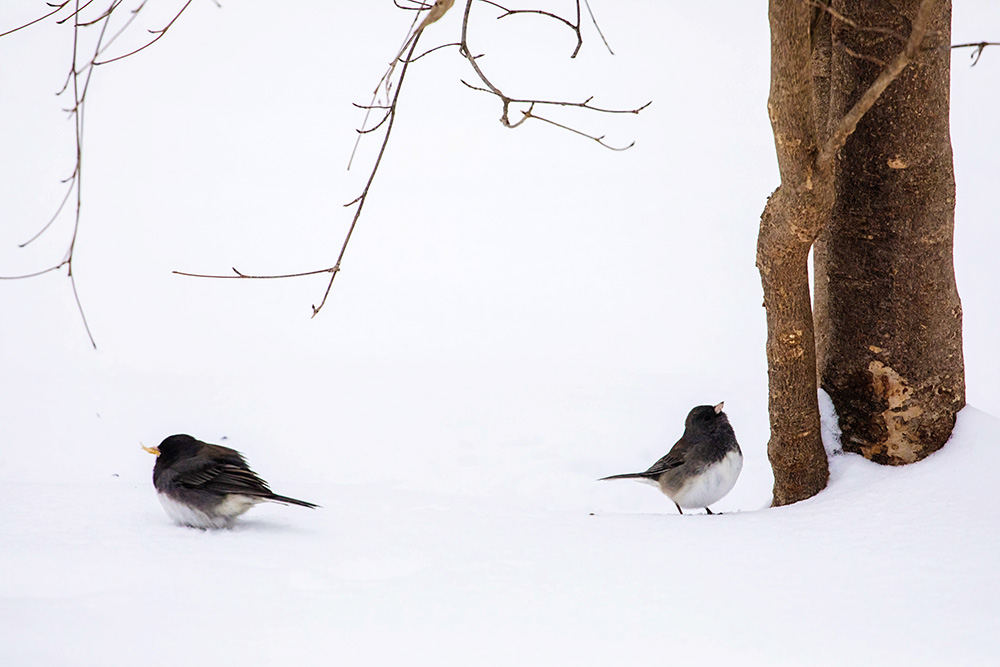
It was time for me to get moving again, but I was first startled by a call I’m not used to hearing at the park. “Is that a killdeer?” I said, scrunching up my brow. (That’s a lie; my face was frozen.) My ears were still working, though, because when I turned toward the golf clubhouse, I saw this familiar little shorebird traversing an icy patch in the road. They frequent grassland habitats, and since Overton Park is primarily forested, it’s a rare treat to see one here. I hope it was able to fly back to Shelby Farms Park and tell its friends about its adventure (i.e., the SUV pulling a guy on a sled that passed by right as I took this photo).
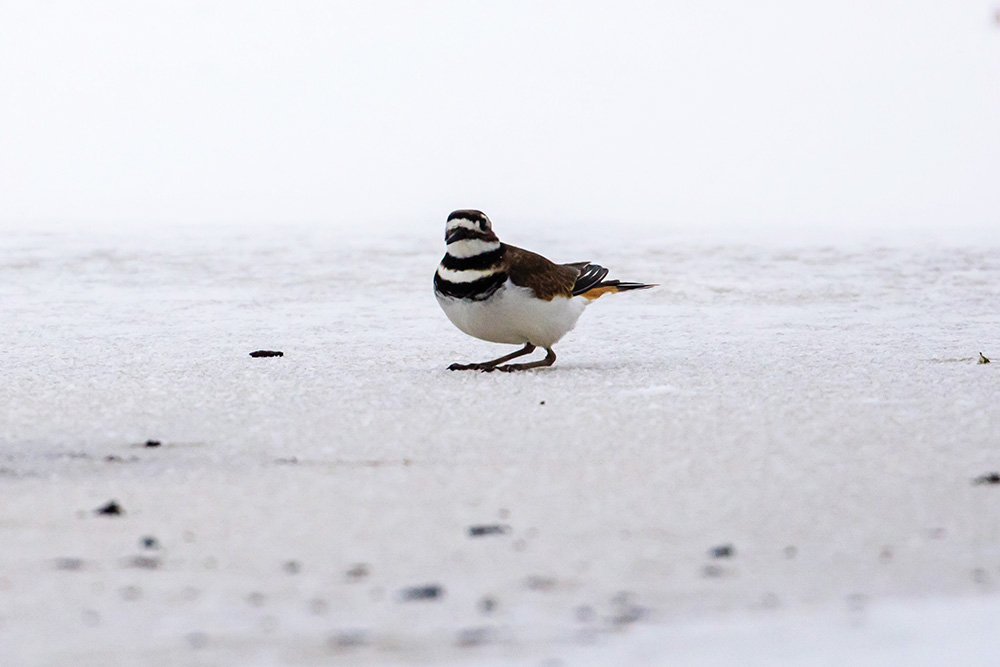
Onward! I caught up with my colleague Kim and headed into the forest through the gate near Overton Bark, where a tufted titmouse was perched obligingly over Lick Creek. I say obligingly; it looks borderline furious.

Perhaps it will forgive me if I also include a photo from its good side.
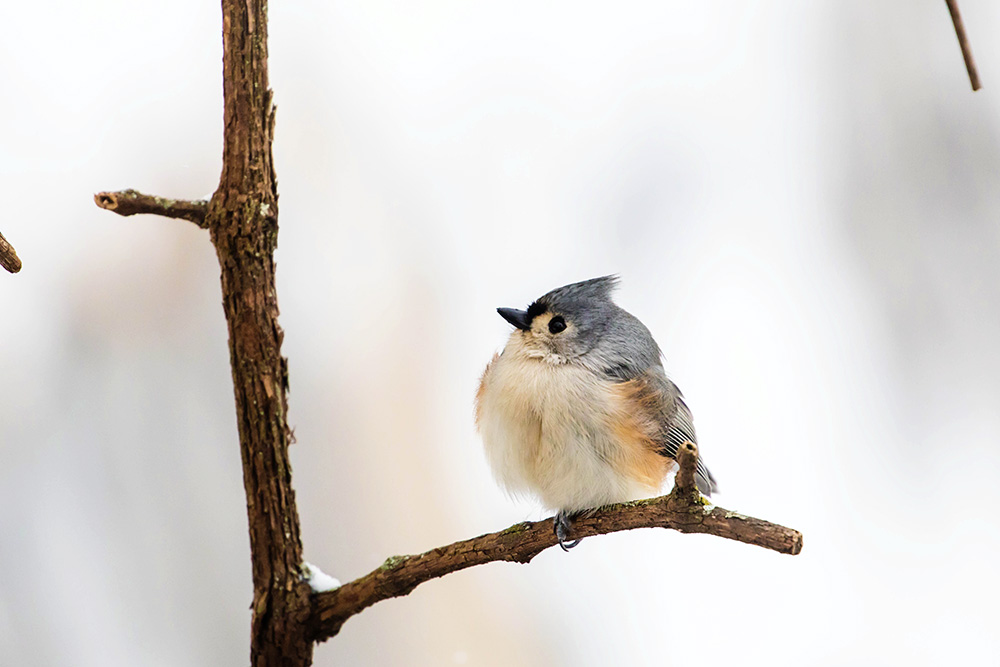
It’s not a proper day of snow-birding until you see a Northern cardinal, blazing against the brilliant white. This one was enjoying the seeds of a hophornbeam tree.
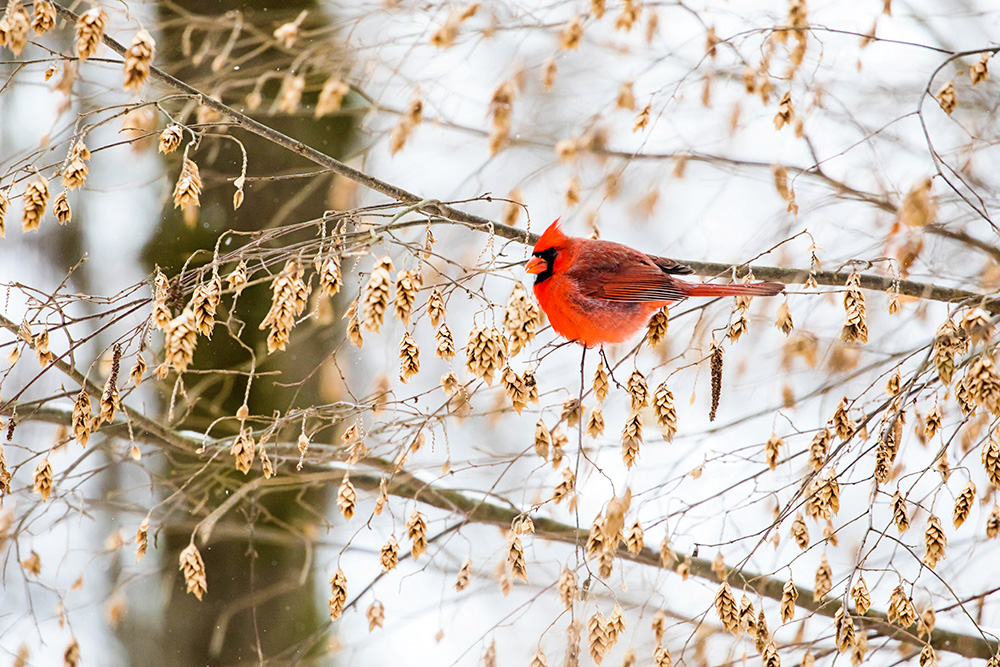
One thing we noticed: many of the birds we saw had a companion. Whenever we spotted a male cardinal, all we had to do was look a few feet away to find a female. We observed pairs of titmice and nuthatches too, working the same trees and then following each other to the next location. Could teamwork be one way to get through the winter?
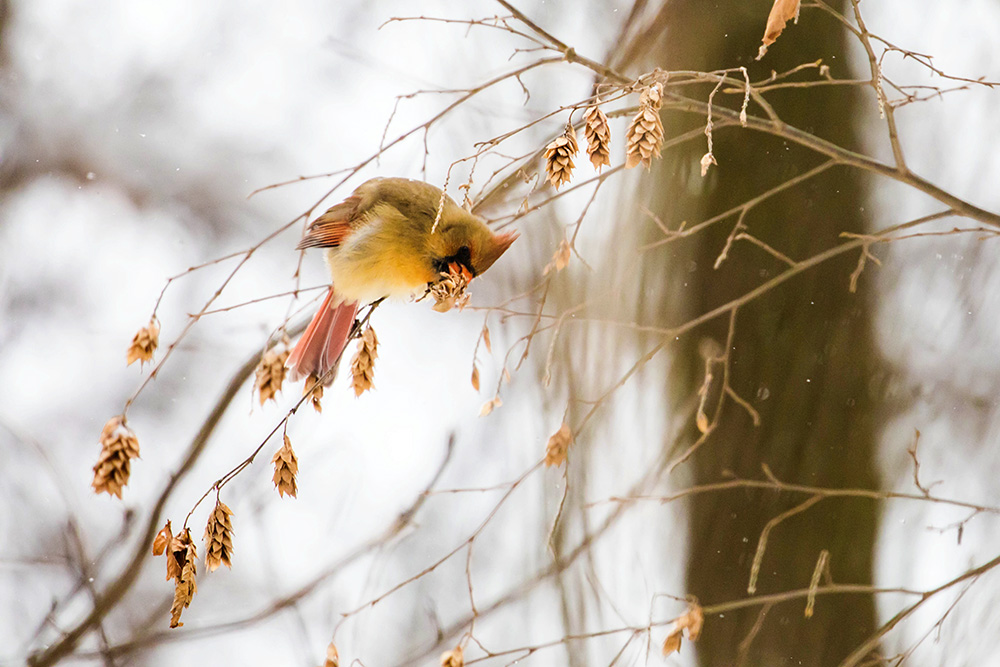
We stopped for a minute to watch a white-throated sparrow diligently cleaning all the meat out of a large seed that it had placed in a groove between two walls of snow. For a brief moment, it craned its neck at the sound of a Carolina wren calling before getting back to work.
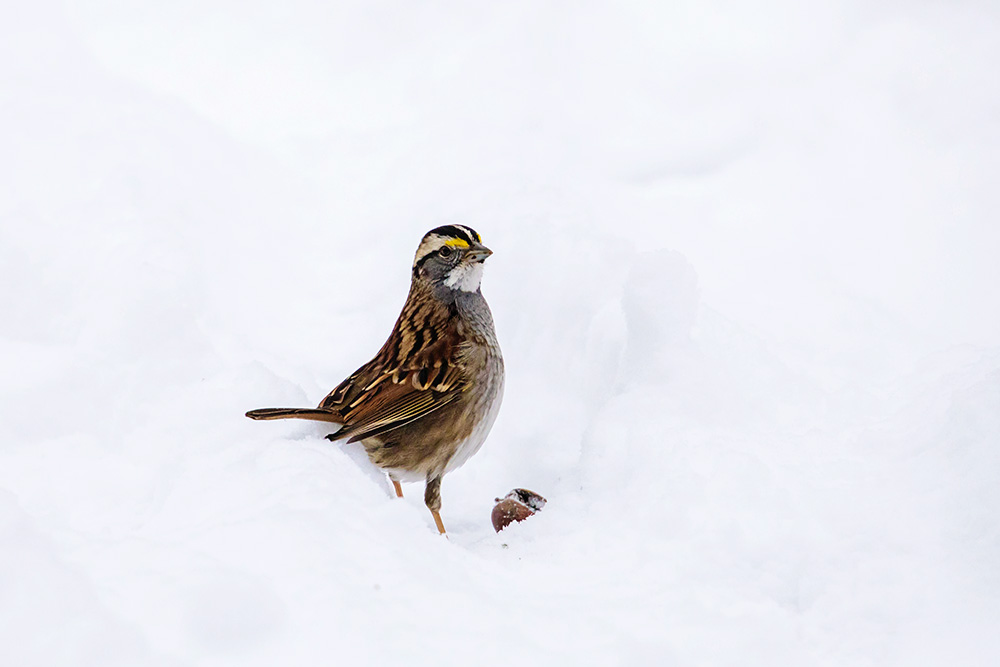
Our last stop for the day was a tree whose base was being excavated by a brown thrasher. Eventually, it hopped onto a branch to preen, fanning out its tail to about five times the width I normally see it displaying. Then it settled back down and fluffed up its feathers, which looked like a cascade of chocolate raindrops coming down from its neck. Or maybe it was just time for me to have some hot cocoa.
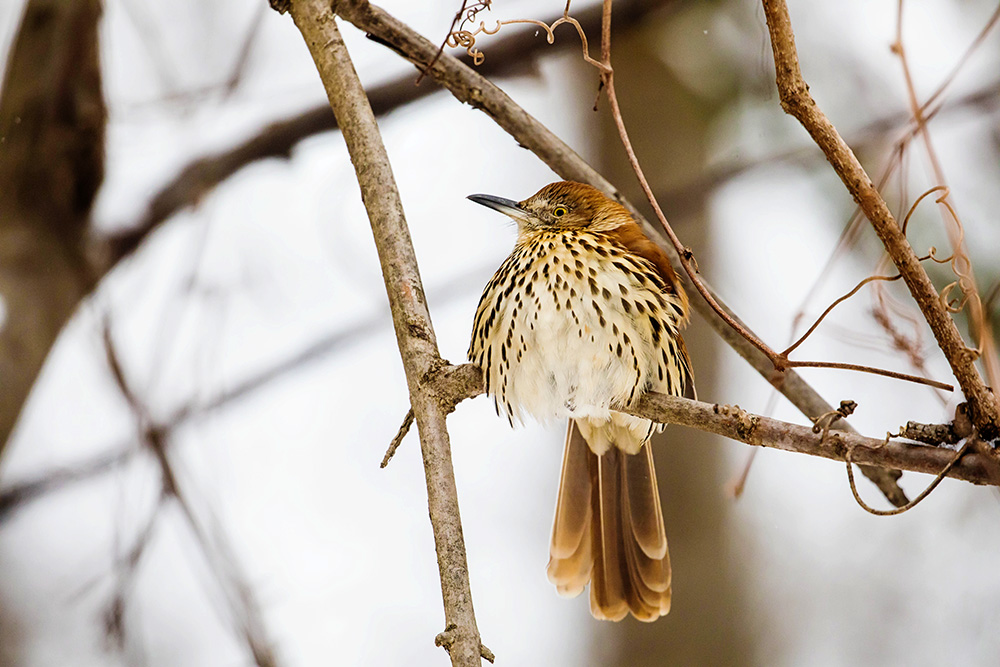
Yesterday’s sunshine meant we had to go out and try again, because one of my favorite photographic novelties is seeing how birds look different when the snow acts like a big reflector shining up at them. In this case, the snow provided excellent definition for the feathers of a rusty blackbird. In flatter light, they don’t always look this beautifully speckled, but today’s elements made it easy to appreciate why they were given the name “rusty.”
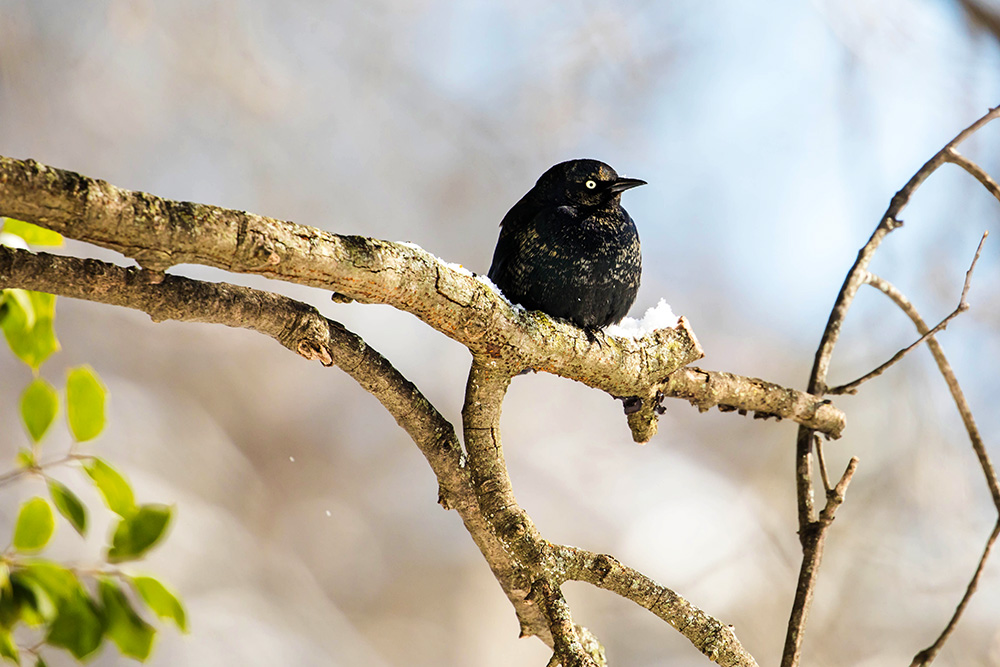
We also got a great look at a red-bellied woodpecker, which appeared to be retrieving an acorn it had cached in a tree on the edge of the Greensward.

But that wasn’t my favorite woodpecker spotting of the day. We walked back over to the holly tree that had been so productive yesterday, and there were robins by the dozen foraging in the leaf litter below. The tree itself appeared to have been picked totally clean; I couldn’t spot a single berry. But then we heard what sounded like a cat meowing right over our heads. It’s not the right time of year for gray catbirds to be here, so we kept looking…and spotted two yellow-bellied sapsuckers! By watching them choose limbs to hang from and forage, we saw that there were still a few berries on this tree after all.
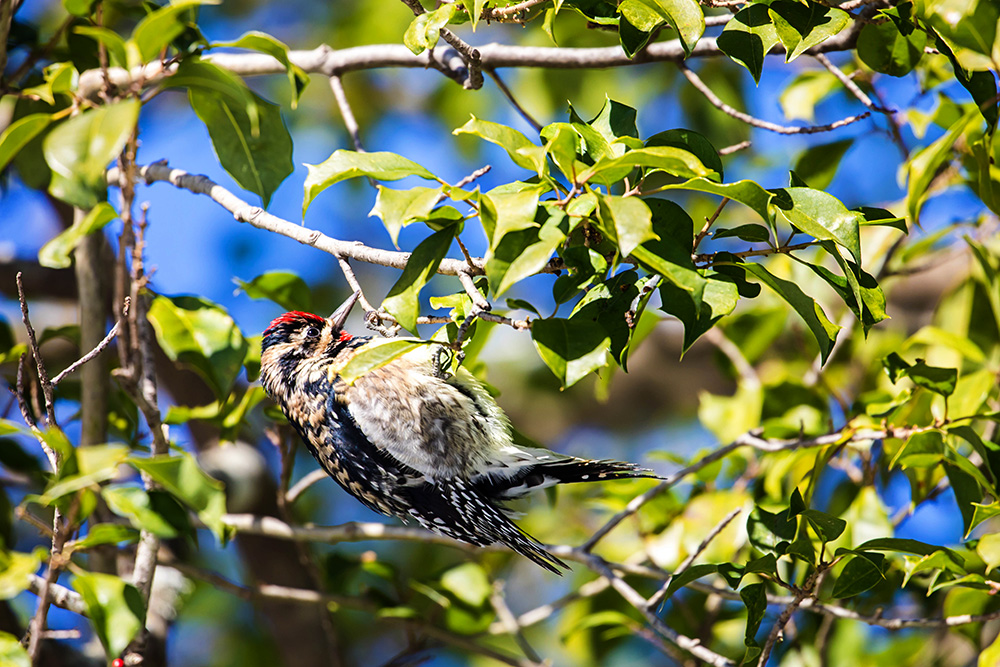
We finished off the day by watching a ruby-crowned kinglet flit first between clusters of dead leaves and then through the branches of some small trees. Upon closer inspection, it was scraping bits off the undersides of mushrooms growing on the tree trunks! This isn’t a behavior I’d ever observed before, and it made me grateful all over again for the ways in which winter birding helps me to slow down and notice something new.




